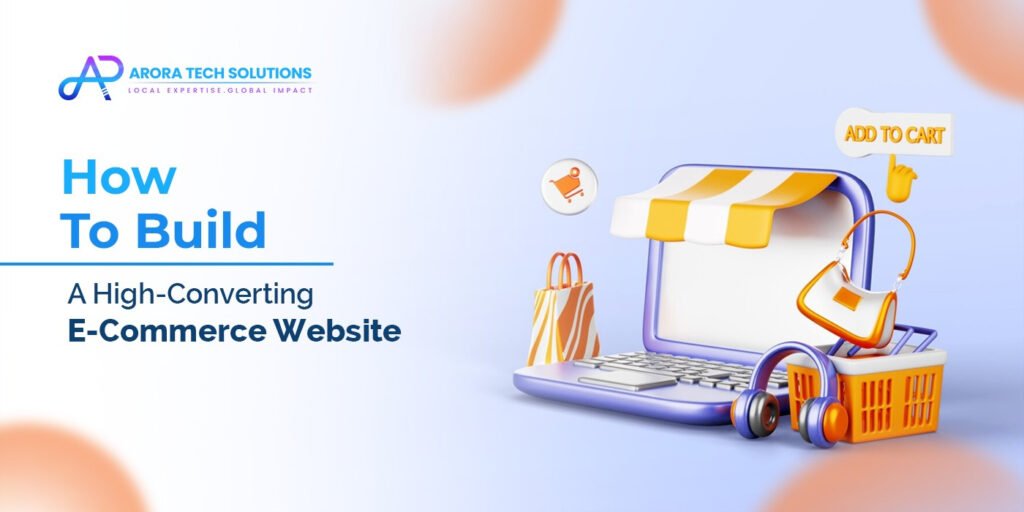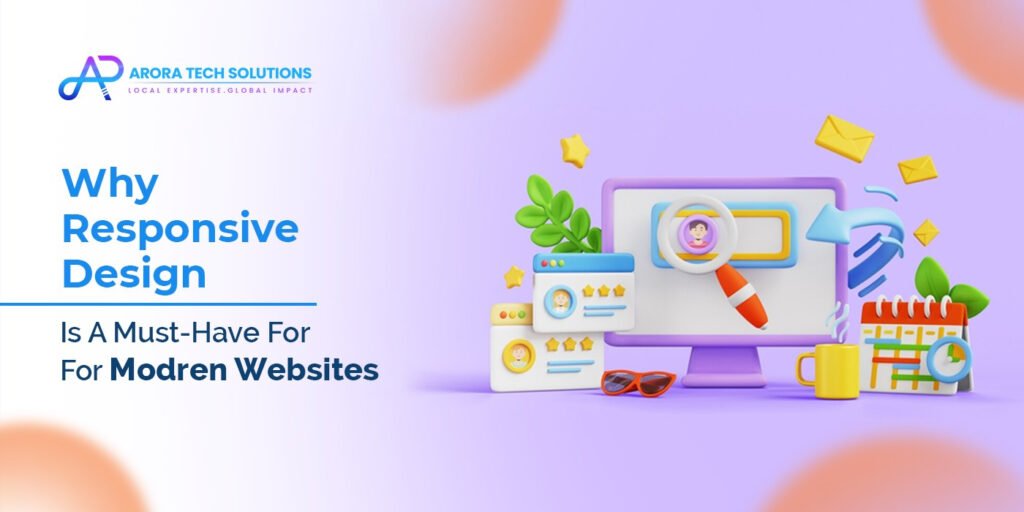How to Build a High-Converting E-Commerce Website
How to Build a High-Converting E-Commerce Website
Building a successful e-commerce website is more than just showcasing products. It involves creating a seamless user experience, optimizing the design for conversions, and ensuring that potential customers can easily find, explore, and purchase products. In this guide, we’ll walk you through the essential steps to create a high-converting e-commerce website that drives sales and maximizes ROI.
1. Focus on User-Centric Design
Overview: The design of your e-commerce website directly influences the customer journey. A user-friendly, intuitive, and aesthetically pleasing website will help you convert visitors into buyers.
Key Elements:
- Clear Navigation: Use simple, easy-to-understand categories and subcategories. A well-structured navigation menu will help visitors quickly find what they’re looking for.
- Mobile Optimization: Ensure your website is fully responsive and mobile-friendly. A significant portion of e-commerce traffic comes from mobile devices, so your site must look and work well on smartphones and tablets.
- Fast Loading Speed: Aim for a page load time of under 3 seconds. Slow websites lose customers—optimize your images, reduce code bloat, and use fast hosting to improve speed.
Impact on Conversions: A clean, responsive design with intuitive navigation ensures that visitors can easily browse products and check out without frustration, leading to higher conversions.

2. Optimize Product Pages for Conversions
Overview: Your product pages are the heart of your e-commerce website, so it’s essential that they effectively sell your products. They should provide all the information your customers need and encourage them to take action.
Key Elements:
- High-Quality Product Images: Show multiple high-quality images of each product, ideally with the option to zoom in. Clear visuals help customers understand what they’re buying.
- Detailed Descriptions: Include clear, concise, and persuasive product descriptions. Highlight key features, benefits, and specifications.
- Customer Reviews and Ratings: Social proof is powerful. Display customer reviews and ratings to build trust and provide reassurance to potential buyers.
- Clear Call-to-Action (CTA): Your “Add to Cart” or “Buy Now” buttons should be easy to find, stand out on the page, and encourage action.
Impact on Conversions: By providing high-quality visuals, detailed descriptions, and social proof, your product pages can help customers make informed decisions and feel confident in their purchases.
3. Simplify the Checkout Process
Overview: A complicated or lengthy checkout process is one of the leading causes of cart abandonment. Streamlining the checkout experience can drastically improve conversion rates.
Key Elements:
- Guest Checkout Option: Allow customers to check out as guests without requiring them to create an account. Many shoppers abandon their carts when forced to sign up for an account.
- Multiple Payment Options: Offer a variety of payment methods such as credit cards, PayPal, Apple Pay, and other popular options to cater to different preferences.
- Clear Progress Indicators: Display a progress bar or step-by-step indicator to show customers how many steps are left in the checkout process.
- Offer Discounts and Promotions: Display promotional codes and discounts clearly during checkout to encourage customers to complete their purchase.
Impact on Conversions: By making the checkout process quick and easy, you minimize friction and reduce the likelihood of cart abandonment, leading to higher conversion rates.
4. Incorporate Strong Trust Signals
Overview: Building trust with visitors is crucial to converting them into paying customers. Trust signals can reassure users that your website is legitimate, safe, and secure.
Key Elements:
- SSL Certificates: Display security badges like the SSL certificate icon to ensure customers that their payment information is safe.
- Privacy Policy and Terms: Link to clear privacy policies and terms of service, which helps build transparency and trust with your customers.
- Money-Back Guarantee: Offer a return or money-back guarantee to reduce the perceived risk of purchasing from your store.
Impact on Conversions: Trust signals help alleviate concerns, which increases the likelihood that customers will proceed with their purchases. A secure and trustworthy shopping environment is essential for building customer loyalty.
5. Provide a Seamless Search Functionality
Overview: A robust search function can make a huge difference in helping customers find exactly what they want quickly and easily. This can greatly enhance the user experience and boost conversions.
Key Elements:
- Smart Search Bar: Include a search bar at the top of every page that offers autocomplete suggestions and product filtering options.
- Filters and Sorting Options: Allow customers to filter products based on categories such as size, color, price range, and ratings. Sorting options like “Best Seller” or “Price Low to High” help them quickly find what they’re looking for.
- Search Results Page: Display results with clear images, product names, and prices. Ensure that the results are accurate and relevant to the user’s query.
Impact on Conversions: Easy-to-use search features help customers quickly find what they need, leading to a smoother shopping experience and more conversions.
6. Implement Personalization
Overview: Personalized experiences are more likely to convert visitors into buyers. By tailoring the shopping experience to individual users, you can increase engagement and drive sales.
Key Elements:
- Product Recommendations: Suggest products based on the user’s browsing history or previous purchases. These personalized suggestions can help increase the average order value.
- Personalized Email Campaigns: Send tailored email promotions, product recommendations, or abandoned cart reminders to keep customers engaged.
- Location-Based Offers: Display location-specific promotions or shipping options based on the customer’s region.
Impact on Conversions: Personalization makes customers feel valued and understood, leading to more engagement and higher conversion rates.
7. Mobile Optimization
Overview: With mobile commerce on the rise, it’s essential that your e-commerce website is fully optimized for mobile users. If your website doesn’t provide a smooth mobile experience, you risk losing a large portion of potential customers.
Key Elements:
- Responsive Design: Ensure that your website adapts to different screen sizes and orientations for a seamless mobile shopping experience.
- Touch-Friendly Buttons: Make buttons and links easy to click on mobile devices by ensuring they’re appropriately sized and spaced.
- Mobile Payment Options: Offer mobile-friendly payment options like Apple Pay, Google Pay, or other one-click solutions for easier mobile transactions.
Impact on Conversions: A well-optimized mobile experience ensures that users can shop seamlessly from their smartphones and tablets, resulting in higher conversion rates from mobile visitors.
Conclusion
Building a high-converting e-commerce website requires a blend of strategic design, seamless functionality, and effective marketing. By focusing on user-friendly design, optimizing product pages, simplifying the checkout process, and incorporating trust signals, you can create a shopping experience that turns visitors into loyal customers. Personalization, mobile optimization, and robust search functionality will further enhance your chances of success. With the right approach, your e-commerce website can not only attract traffic but also convert that traffic into sales, boosting your business’s revenue and long-term growth.




